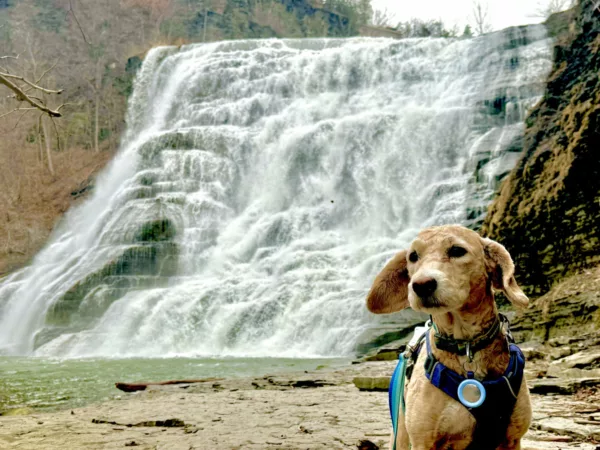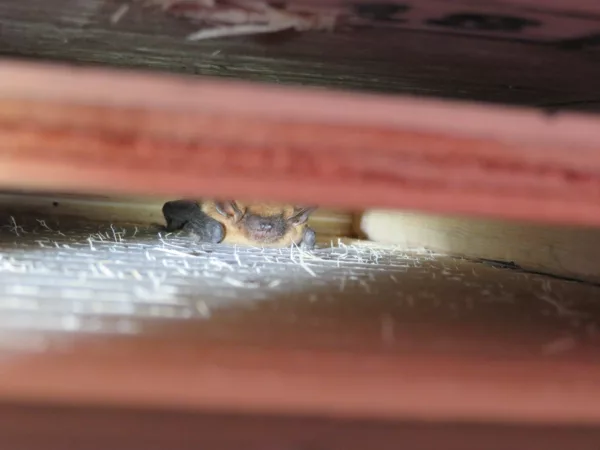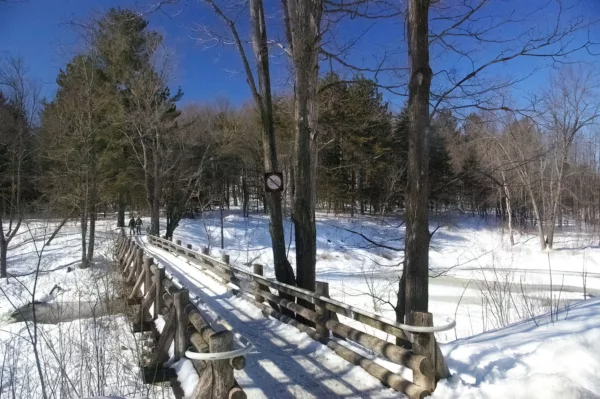Bear Safety 101

Bear safety should always be on the mind of any Canadian backcountry hiker. There’s no need to be scared of bears, but you should be prepared.
On the west coast, black bears can even be sporadically active in winter. In any case, it’s never too early to educate yourself for next year’s camping season. Here are some tactics for dealing with bears in the bushes.

Avoid bears by making your presence pre-emptively known.
While trekking through trails, chat loudly with your companion. Clap your hands. Every once in a while, yell out “No bear! No bear!” If you are hiking solo, sing a tune, ring a bell or take along a marine signal air-horn and give it a blast every once in a while.
Always be aware of your surroundings.
Keep a lookout for signs of bears such as scat, tracks or rubs. Bears produce territorial warnings in the forms of these signs, so further intrusion could be perceived as aggression on your part. Tempting as they are, stay away from berry patches—berries mean bears. Be wary of the smell of rotten flesh or fish—it’s bear attractor number one.
Don’t give bears a reason to come your way.
If your plan is to have a picnic lunch followed by a hike, make sure your foodstuffs are consumed or returned to your car or campsite or disposed of properly. Be mindful of your own scent. Did you wash with papaya shampoo this morning? What about coconut sunscreen?
Dealing with defensively-behaved bears

Experts prefer to divide bears in terms of behaviour, not species. Defensive behaviour occurs when a bear feels threatened or is protecting its food or cubs. These bears will show signs of stress such as huffing, vocalizing, jaw-popping, pawing the ground, breaking branches or even “bluff charges,” but what they want is for you to go away. Here’s how to show them you mean no harm.
Don’t run as this may provoke a chase.
Stop and face the bear. Don’t challenge it with eye contact. Keep the bear in view and back off. Talking to the bear in a calm, low-pitched voice not only serves to dissuade the bear, but will also calm you and keep your brain working so you can intelligently assess the situation.
Bear spray
Bear spray, within its range of about five metres, is 98 per cent effective in warding off all bears, canines and cougars.
Lie down in a protective position
If an attack from a defensive bear becomes imminent and you are without a means of defence (i.e. bear spray), experts advise you to lie down in a protective position, regardless of the species. Ideally, the threat you pose will be diminished and the bear can leave in peace.
Dealing with predatorily-behaved bears

Predatory behaviour means the bear is stalking you—it is aware of your presence and is actively closing in. This is rare. Bears will be stealthy during this process and exhibit little signs of stress. Here are some tips on how to deal with a predatory bear.
Bear spray
Regardless of whether the bear is black or grizzly, bear spray is your go-to.
Natural curiosity versus predatory behaviour
Black bears’ natural curiosity can mimic predatory behaviour. In areas of higher human populations, black bears have been known to approach humans in an almost “predatory” fashion—but they may just be habituated and/or food conditioned. Keep this in mind if you encounter a black bear near a population centre.
Assume black bears are predatory
If you’re in a remote area and are actively stalked or approached by a black bear, assume it is predatory. An approaching grizzly is more often defensive.
Remember: if you see a bear, leave the area the way you came and do not return.
For more on bears, check out:
Canada’s Most Dangerous Predators
We Need to Learn Better Bear Etiquette in the Outdoors















